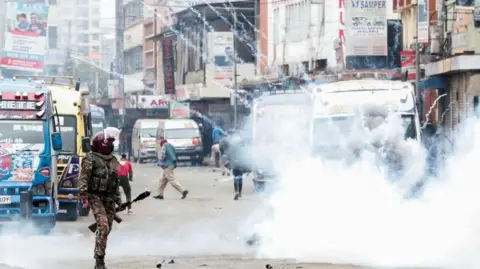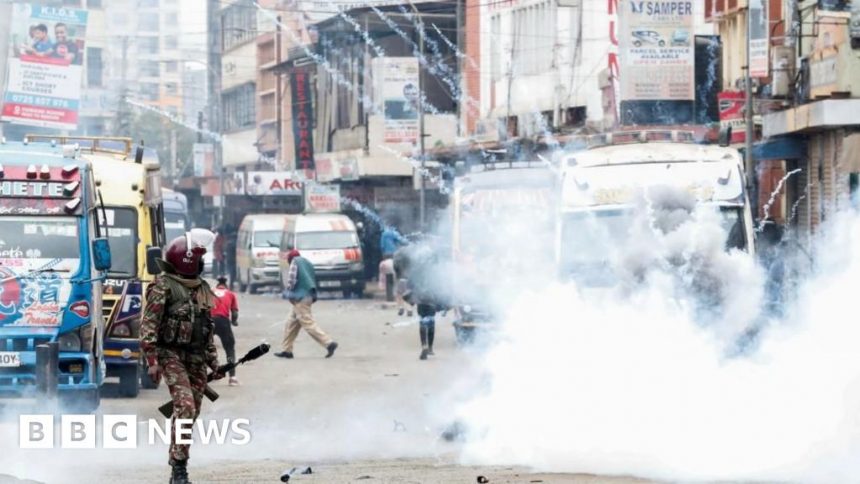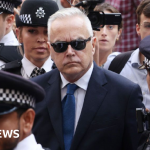Kenya police tear-gas protesters as cabinet sworn in
 Reuters
Reuters Kenyan police have fired tear gas to disperse small groups of anti-government protesters in the capital, Nairobi, demanding better governance as a new cabinet was sworn in.
Businesses in the city were closed and public transport paralysed as police mounted roadblocks on major roads to bar protesters from accessing the central business district.
The demonstrations are a continuation of months-long anti-tax protests that have since morphed into calls for President William Ruto to resign.
The youth-led protests have already forced the president to withdraw planned additional taxes and dissolve his cabinet.
Mr Ruto has appointed senior opposition officials to his cabinet, in a move to quell growing public anger against his government.
He gave four posts to the opposition – including the powerful finance and energy ministries.
- Double whammy for the Kenyan president’s tax plans
- Batons, tear gas, live fire – Kenyans face police brutality
The new cabinet was sworn in early on Thursday amid a heavy security deployment at the president’s official residence, State House, which protesters had threatened to storm.
During the ceremony, Mr Ruto said the new cabinet “cannot and must not fail Kenyans”.
He described his new team as an “alliance of rivals” in a nation that had long suffered “factional and sectarian competition”.
“More than ever, it is clear that we are fully united by a shared devotion to secure a prosperous Kenya that serves us all,” Mr Ruto added.
About half of the ministers were in his previous cabinet, a move that has further angered protesters, who are demanding a complete break with the past.
They had rejected the new cabinet, saying it merely perpetuates deal-making among Kenya’s political elite.
Riot police patrolled Nairobi’s streets from early on Thursday but only a few dozen demonstrators turned out compared to previous protests such as the one when parliament was set ablaze.
Several people have been arrested as police dispersed small groups of youth who tried to congregate for the protest – dubbed “Nane Nane March” – meaning “8 August March” in Swahili.
Nairobi’s streets appeared largely quiet, with a few people going about their normal business.
Major towns and cities, including the lakeside city of Kisumu – an opposition stronghold – and Eldoret – Mr Ruto’s hometown – that previously witnessed protests were calm.
On Wednesday, acting police chief Gilbert Masengeli had warned that “criminals” intended to infiltrate the demonstrations and urged people to avoid “protected areas” such as the main international airport and State House.
More than 50 people have died since the demonstrations started in June, according to the state-funded Kenya National Commission on Human Rights.
Former police chief Japhet Koome, who had been accused of employing brutal tactics in dealing with the demonstrators, resigned last month.
This did not appease protesters seeking justice for those who had died – and they have vowed to continue demonstrating until the president steps down.
Mr Ruto rose to the presidency promising on the campaign trail to improve the lives of Kenya’s poor – especially young people known as “hustlers” – after defeating his main rival Raila Odinga by a narrow margin in the 2022 election.
But he is now caught between the demands of the “hustlers”, who are struggling with a cost-of-living crisis, and international lenders demanding his government meets payments for its massive national debt.
More BBC stories on the protests in Kenya:
 Getty Images/BBC
Getty Images/BBCGo to BBCAfrica.com for more news from the African continent.
Follow us on Twitter @BBCAfrica, on Facebook at BBC Africa or on Instagram at bbcafrica







